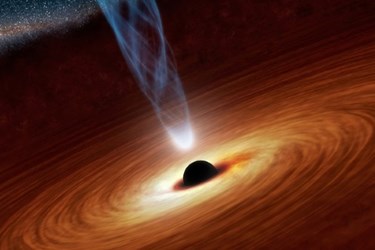Will Radio Telescopes Deliver The Image Of The Century?
By Chuck Seegert, Ph.D.

An unprecedented worldwide collaboration has brought together a global network of radio telescopes to achieve an incredible level of image resolution. The objective of this effort is to image for the first time what some deem to be the most exotic object in the universe — a black hole’s event horizon.
First discussed by Albert Einstein in his Theory of General Relatively, black holes are phenomena that most people have heard about, but no one has actually seen. Support for their existence is extensive and has been provided by countless observations and experiments. Thus far, however, it has been impossible to view one of these cosmic centers.
Visual confirmation of the existence of black holes may now be eminent, however, thanks to researchers working at the Massachusetts Institute of Technology’s Haystack Observatory, according to a recent story from Business Insider. To collect the data for what the team calls the “image of the century,” researchers have assembled a new telescope array called the Event Horizon Telescope (EHT). By combining radio dishes from Hawaii, Arizona, and California, the EHT can resolve details up to 2,000 times finer than the Hubble Space Telescope.
"In essence, we are making a virtual telescope with a mirror that is as big as the Earth," said Sheperd Doeleman, the principal investigator of the EHT, according to Business Insider. "Each radio telescope we use can be thought of as a small silvered portion of a large mirror. With enough such silvered spots, one can start to make an image."
The team’s focus is to study super massive black holes (SMBH) at a high enough resolution to directly observe a black hole’s event horizon, according to Business Insider. When networked, the EHT is essentially an Earth-sized radio telescope that allows researchers to observe millimeter wavelengths by very long baseline interferometry (VLBI). Their observational targets are the SMBHs SgrA*, a black hole that resides at the center of the Milky Way, and M87, a giant elliptical galaxy that is about 50 million light years away.
“The Event Horizon Telescope is the first to resolve spatial scales comparable to the size of the event horizon of a black hole,” said University of California, Berkeley astronomer Jason Dexter in the BIA article. “I don’t think it’s crazy to think we might get an image in the next five years.”
Radio astronomy continues to push the edge of science in other areas as well. Recently, atomic hydrogen was detected in galaxies at record distances using the Arecibo radio telescope in Puerto Rico.
Image Credit: NASA
